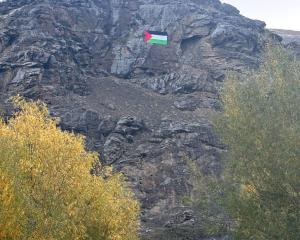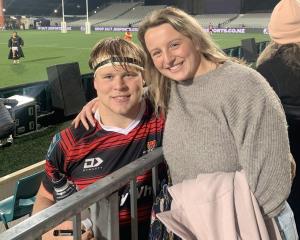
While most of the high-end outfits in Naseby farmer Eden Hore’s collection of New Zealand fashion on show are in Dunedin, some are on display in Central Otago, encased in custom engineered "pods", designed by Dunedin company ZoomTech.
Design engineer Richard Cathro said work on the pods began about five years ago, following discussions with Eden Hore collection steering group member and fashion historian Dr Jane Malthus, who already had a concept design for the cases.
"I was a little intrigued about it," he said.
Mr Cathro knew of the collection and had visited "the Eden Hore menagerie of things" and its caretaker while staying in the Maniototo as a child.
"I could imagine at that time I was very reluctant to be dragged around looking at dresses," he said.
Mr Hore amassed the largest collection of haute couture 1970s and ’80s fashion in New Zealand — more than 270 gowns, primarily by the country’s leading designers.
The outfits were housed in a former tractor shed on his property until his death in 1997 and this month, a two year exhibit displaying collection highlights opened at Toitū Otago Settlers Museum.
However, some items are also on display in ZoomTech’s pods at small exhibitions at Central Stories Museum and Art Gallery in Alexandra and at Lohi in Ranfurly.
Exhibiting the delicate clothes outside of museum conditions presented a challenge — "the only way you can put some of these clothes on display is in some means of that people can’t touch them," Mr Cathro said.
The solution was the airtight pods, made of about 300 pieces of wood, plexiglass and aluminium — "a massive Lego set to build" — with a computer-controlled air circulation system to prevent dust settling on the clothes.
The pods’ colours were inspired by the Maniototo landscape and fashion photographer Derek Henderson’s images of the collection modelled in the Central Otago high country.
Six pods had been constructed, though not all were in use, and ZoomTech had received huge input from the collection steering group.
"The challenges to make this are beyond trying to write them down," Mr Cathro said.
For example, the pod’s plexiglass had to be bent, but "we couldn’t find anyone to bend the plexiglass so we built a machine to do it."
Since they went on display, Mr Cathro had fielded inquiries about the pods from Te Papa and had five women looking to display their wedding dresses in them.
"We do a lot of work for overseas that no-one gets to see in New Zealand. So in lots of ways, this was a project that I could do that we could show off some of our work."











